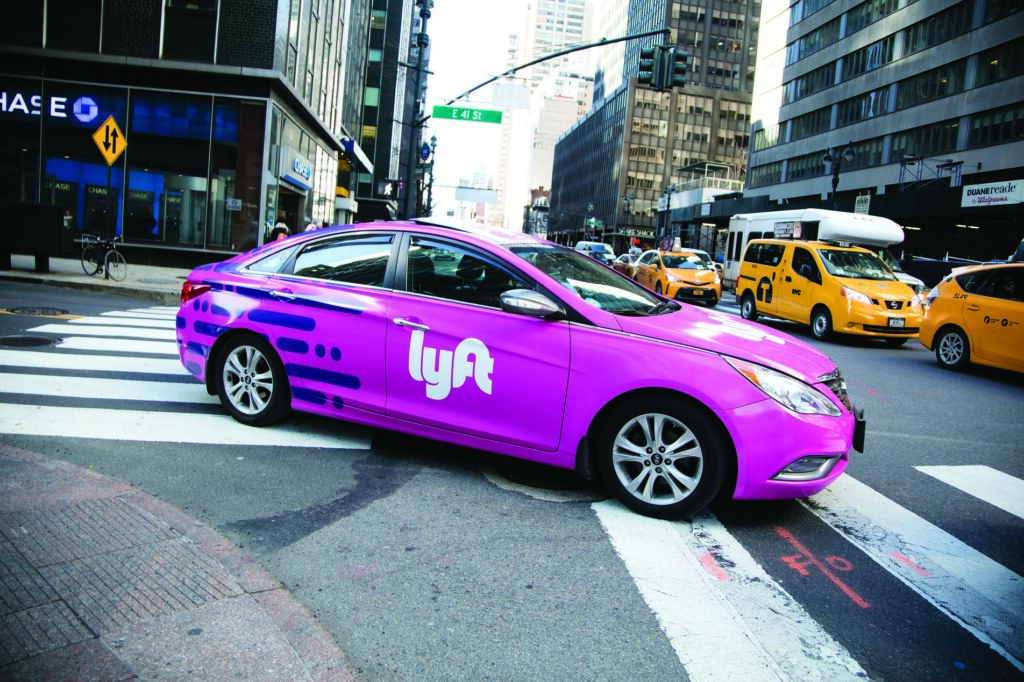Navigating the complex nature of self-employed taxes can leave you with a lot of unanswered questions. How does the IRS tax my Lyft income? Do I have to report my income from ridesharing? Will I get a 1099 form? These are just a few examples of common questions about Lyft taxes. If you drive for Lyft or any other ridesharing platform, you need to know a few basic things about rideshare taxes.
Driving for Lyft
If you’re a rideshare driver, the IRS classifies you as a self-employed independent contractor. You don’t work for Lyft, so you’re not an employee. Technically, you use Lyft as a market to promote your driving services. You also use Lyft to process payments for your services. Your drive and Lyft pays you your cut of the fare.
As a result, your tax situation changes when you start driving for Lyft because you’re not classified as a W-2 employee. You’re an independent contractor when you drive for Lyft, so you’re responsible for reporting and remitting your own taxes. Unlike a traditional W-2 employer, Lyft won’t withhold taxes for you. That’s why driving for Lyft can complicate your tax situation.
Lyft Driver Taxes
When it comes to the income you earn with Lyft, you may be wondering if you need to report it. The IRS wants all income reported. However, since you work as an independent contractor, it is your responsibility to report your income. As an independent contractor driving for Lyft, you may or may not receive a 1099 K. Lyft is only required to issue a 1099 K if you have over 200 transactions and reach over $20,000 in revenue. If you do not meet that threshold, you will need to rely on your own accounting system to track income. You can also refer to your driver dashboard to view your annual summary. This will provide information on your earning throughout the year.
Does Lyft Take Out Taxes?
Lyft does not withhold taxes from your income. This is because you are an independent contractor. Because Lyft does not withhold taxes from your income, you may be required to pay estimated taxes throughout the year. If you expect to owe more than $1,000 in taxes, you will need to pay estimated taxes. Estimated taxes, otherwise known as quarterly taxes, are tax payments you make to the IRS that represent the taxes an employer would have withheld. Estimated taxes are due: April 15, June 15, Sept. 15, and Jan. 15. Learn more about how to make estimated tax payments here.
1099 MISC Instructions
In addition to possibly receiving a 1099 K from Lyft, you may also receive a 1099 MISC. Lyft is required to issue a 1099 MISC if they pay you more than $600 for non-driving earnings, this includes bonuses and referral fees. If you receive a 1099 MISC you must report the income. The IRS also gets a copy of your 1099, so failure to report the income or reporting it incorrectly could invite some extra scrutiny from the IRS.
Self-Employment Tax Form
In addition to income tax and estimated taxes, self-employed taxes are another part of Lyft taxes. Self-employed taxes represent your portion and the employer portion of social security and medicare taxes. When filing Lyft taxes, you will have to complete a schedule C. This is where you list all of your income and expenses. On a schedule C, your income is leveraged with deductions, to calculate your taxable income, this is either a profit or loss. You will need this figure to calculate your self-employed taxes, which are then calculated on a Schedule SE. The current rate for self-employed taxes is 15.3%, half of which can be written off. Self-employed taxes should be paid throughout the year, along with your estimated taxes.
How to Pay Rideshare Taxes
Estimated taxes are due on a quarterly basis. You may be wondering how to calculate the taxes you owe on the income you haven’t earned yet, and you are not alone. Most people, especially if they are just getting started, are confused about this process. The easiest way to calculate the amount you owe is to take the amount you paid in taxes from the previous year and divide that by 4. You can always adjust this amount as needed. You will want to pay at least 90% of the taxes you owe for the year to avoid penalties from the IRS.
If you owe Lyft taxes, paying online is the easiest way to cover your obligations. You can create an account on the IRS website. From there you can set up payment arrangements, pay income taxes, pay estimated taxes, and pay self-employed taxes. You can also pay state taxes online as well. Learn more about how to pay your taxes online here.
If you are also a W-2 earner, you may be able to bypass making tax payments, by increasing your withholdings. By using this strategy, your employer would withhold more taxes from your paychecks to cover the additional taxes you would owe on your self-employed income. Consult your tax advisor to find out if this strategy is right for you.
Leveraging Deductions
Tax deductions can be really helpful when it comes to Lyft driver taxes. You are running your own business, and so many of your out of pocket expenses related to your business can be deducted from your taxable income. This will save you money on your taxes. Some common deductions for Lyft drivers include insurance, parking fees, maintenance, and professional fees. You also have the option of taking the standard mileage deduction, which is 58 cents-per-mile this year. This accounts for the cost of ownership and takes into consideration the average cost of insurance, registration, fuel, taxes, and maintenance and repairs. When leveraging deductions for your Lyft driver taxes, please note you can either claim the individual expenses or claim the standard mileage deduction. Talk to your tax advisor about which method is best for your situation.
You can also save on your tax bill by contributing to your IRA. IRA contributions up to $6,000 are tax-deductible. If you’re looking for some last-minute tax savings, an IRA contribution could help lower your tax bill. You have until April 15 to contribute for the previous fiscal year. IRA contributions are considered an above the line deduction, meaning you can claim the deduction without itemizing.
Get Help With Lyft Taxes
Lyft drivers can save themselves a lot of trouble with some proper tax planning. If Lyft taxes are driving you crazy, you should consider consulting with a professional tax advisor so you can better understand your options. The certified professionals at Shared Economy Tax can show you the best way to organize your taxes for maximum savings at tax time. Get started today with a complimentary one-on-one strategy session with a Shared Economy Tax pro. For more independent contractor tax tips, subscribe to our newsletter using the form below.

